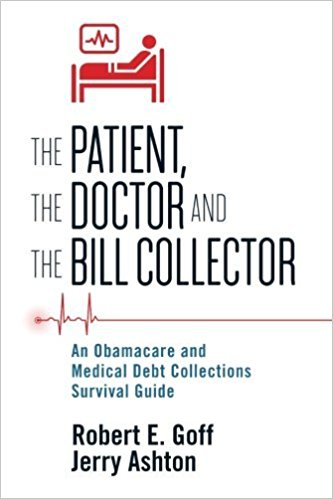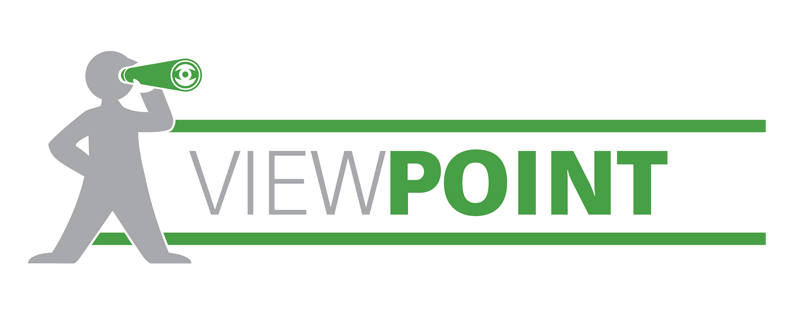Patient Debt: The Peril of the Independent Physician
June 21, 2017 | Featured Articles
The great and continuing debate over Obamacare and plans for its replacement tends to focus on the consequences for the patient and their ability, or lack thereof, to pay for the costs of their care.
That debate has brought together the strange bedfellows of the American Hospital Association and The American Medical Association, two organizations that rarely see eye-to-eye. They share a common concern: the impact of patient medical debt on their constituencies because that debt represents a loss of income to hospitals and physician practices.
Hospitals have long had distinct advantages when it comes to addressing the loss of income from medical debt. Not-for-profit organizations are often monopoles or at least oligarchies in their communities; maintaining licenses as “community benefit organizations” they have been the beneficiaries of numerous governmental programs to help them with the costs of uncompensated care and operating losses.
Bad debt and charity pools, add-ons to reimbursement rates, as well as negotiating the ability to raise rates paid by commercial insurers to cover costs, have provided relief from uncollectible patient accounts. Moreover, as not-for-profit enterprises, they have the availability to plead for and receive philanthropy from the community they serve.
 Not So For the Physician
Not So For the Physician
Physicians do not operate as not-for-profit enterprises, but, rather, small businesses. They must earn enough to cover the costs of their practice, as well as what they wish to take home to provide for their families.
Even large medical groups rarely have geographic market clout comparable to hospitals that can effectively negotiate payment rates with insurers to include the cost of the losses from uncollectible patient accounts. Nor is the individual physician the object of political concern should medical debt cause losses, even if it were to lead to personal bankruptcy.
Physicians also suffer from what we as a society want most from them: understanding. They minister to the needs of their patients while taking on the economic consequences of their work. Highly valued patient-physician relationships cost physicians emotionally and frequently cost them revenue. Compared to hospitals, few physicians aggressively pursue patients for unpaid account balances.
As described in the book I coauthored, The Patient, The Doctor and The Bill Collector, this makes the physician the beneficiary or victim of the outcome of the Obamacare debate. For all its flaws, patients cannot pay what they cannot afford, and physicians cannot maintain their practice without having paying patients.
Patients with insurance (or Obamacare) coverage protect themselves and even the physician from financial ruin. It is hard to find reliable information on the level of medical debt that physicians’ experience since medical practices generally operate on cash-based accounting principles. By operating on a cash basis, income is only recognized when cash is received, and expenses, only when paid. This scenario does not account for the recognition of bad debt as an expense, and there are no central reporting requirements as there are with hospitals. Some industry experts believe that bad debt can run as high as 5.9 percent to 14 percent of a physician’s billings.
A 2010 report from the Medical Group Management Association indicated that on a per-physician basis, bad debts averaged $12,480 for an individual primary care physician, rising to $27,077 for an individual surgical specialist.
The publication Health Affairs estimated that in 2013 uncompensated care for office-based physicians totaled $10.5 billion.
In a 2012 survey , the Physicians Foundation found that 62 percent of physicians said they provided $25,000 or more every year in uncompensated care.
While Obamacare helped create more “insured” patients, it has in some respects not been kind to physicians, for they have had to absorb the large hit from deductibles and co-insurance built into the Obamacare benefit plans when patients do not have the personal financial resources to pay those bills.
Unlike hospitals that can renegotiate its contracts with commercial insurance plans seeking increases in reimbursed rates and pleading for additional Medicare of Medicaid funding, physician reimbursement is virtually capped. The private physician has little to no ability to raise rates, or get paid those higher rates because of increased patient bad debt. There are few if any “self-pay” patients that are paying the physician’s charges to offset losses from bad debt or for that matter rising operating costs.
Medicare and Medicaid have been far less than kind to physician incomes, as they receive nominal increases in compensation compared to their operating cost increases. Increases that are so limited; they do not even to keep pace with inflation. For example, between 1998 and 2010, the cost of operating a medical practice increased 54 percent, Medicare rates increased 11 percent. Obamacare made additional funds available for increased Medicaid payments, but they remain below that of commercial rates in the market. The same is true for Medicare.
In the past, commercial payers had been the funding source to cover shortfalls in governmental payments. Today, payers are reimbursing at the lowest levels and still maintain an adequate physician network. For the physician in private practice, the squeeze is on.
What Should Physicians Do?
Losses stemming from patient medical debt are one more factor driving practices to change—to survive they must change.
With no meaningful way to increase revenue (after all, there are only so many hours in the day and what physicians are selling, in reality, is their time), physicians must approach every aspect of their practice with a commitment to squeeze revenue and reduce expenses.
The approach to patient debt is especially problematic for physicians because they function with both their head and their heart. In their head, they understand that to continue practicing medicine they must find ways of capturing revenue from any source available, including holding the patient responsible for their portion of the bill. Within their heart, they know that meeting the need for revenue can be accomplished to the detriment of the very individuals that they are supposed to serve. It is a conflict that is most troubling to physicians.
Self-preservation drives many physicians into Hobson-like choices (take it or leave it), which hardens the heart and forces them to go for the money.
If they can afford to lose patient volume, then physicians withdraw from lower-paying health plans, which often means dropping Medicaid, cutting off services to the poor in their community. The consequences for the patient is a loss of continuity of care and for society; often the patient will seek care in higher cost hospital emergency rooms, poor quality Medicaid “mills” or public health or community health centers, which cost more than the private physician.
Some physicians choose to pass the potential for medical debt to others by requiring patients to provide credit cards to be billed for patient financial responsibilities. Intellectually, physicians know that they may have condemned their patients to interest rates as high as 24 percent and strong collection practices by the card issuer.
Others choose the business approach, turning over unpaid accounts to collection agencies, knowing that their patient will be hounded. Even if successful, at best this will result in the physician paying the agency a 30 percent to 50 percent collection fee.
All undesired but necessary Hobson choices.
Patient debt and its contribution to the financial instability of the private practice of medicine is one more factor in the loss of private practices. Physicians are leaving private practice in increasing numbers, with just one-third expecting to continue working as independent practitioners beyond 2016 according to a study from Accenture.
Their report found that the number of independent physicians dropped from 57 percent in 2000 to 49 percent in 2015 and predicted that the number would drop further, to 33 percent. The causes are reimbursement pressures and overhead cost increases. While patient medical debt is not the sole factor, losses from uncollectible patient receivables is a contributing factor.



